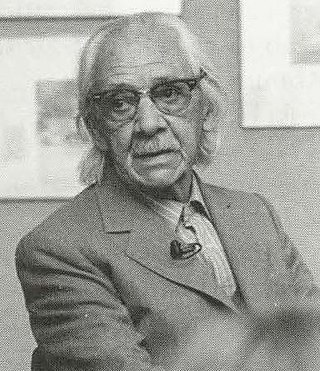This article needs additional citations for verification .(October 2019) |
This is a list of women photographers who were born in Mexico or whose works are closely associated with that country.
This article needs additional citations for verification .(October 2019) |
This is a list of women photographers who were born in Mexico or whose works are closely associated with that country.

Manuel Álvarez Bravo was a Mexican artistic photographer and one of the most important figures in 20th century Latin American photography. He was born and raised in Mexico City. While he took art classes at the [Academy of San Carlos], his photography is self-taught. His career spanned from the late 1920s to the 1990s with its artistic peak between the 1920s and 1950s. His hallmark as a photographer was to capture images of the ordinary but in ironic or Surrealistic ways. His early work was based on European influences, but he was soon influenced by the Mexican muralism movement and the general cultural and political push at the time to redefine Mexican identity. He rejected the picturesque, employing elements to avoid stereotyping. He had numerous exhibitions of his work, worked in the Mexican cinema and established Fondo Editorial de la Plástica Mexicana publishing house. He won numerous awards for his work, mostly after 1970. His work was recognized by the UNESCO Memory of the World registry in 2017.

Graciela Iturbide is a Mexican photographer. Her work has been exhibited internationally, and is included in many major museum collections such as the San Francisco Museum of Modern Art and The J. Paul Getty Museum.

Lola Álvarez Bravo was the first Mexican female photographer and a key figure in the post-revolution Mexican renaissance. Known for her high level of skill in composition, her works were seen by her peers as fine art. She was recognized in 1964 with the Premio José Clemente Orozco, by the State of Jalisco, for her contributions to photography and her efforts to preserve the culture of Mexico. Her works are included in the permanent collections of international museums, including the Museum of Modern Art in New York City.
The following outline is provided as an overview of and topical guide to photography:
Arthur Leipzig was an American photographer who specialized in street photography and was known for his photographs of New York City.

The participation of women in photography goes back to the very origins of the process. Several of the earliest women photographers, most of whom were from Britain or France, were married to male pioneers or had close relationships with their families. It was above all in northern Europe that women first entered the business of photography, opening studios in Denmark, France, Germany, and Sweden from the 1840s, while it was in Britain that women from well-to-do families developed photography as an art in the late 1850s. Not until the 1890s, did the first studios run by women open in New York City.

Photography by indigenous peoples of the Americas is an art form that began in the late 19th century and has expanded in the 21st century, including digital photography, underwater photography, and a wide range of alternative processes. Indigenous peoples of the Americas have used photography as a means of expressing their lives and communities from their own perspectives. Native photography stands in contrast to the ubiquitous photography of indigenous peoples by non-natives, which has often been criticized as being staged, exoticized, and romanticized.
Nacho López was an important figure in the photojournalism of Mexico in the 20th century. Unlike the current of the time, he mostly rejected the creation of images that made Mexico exotic and preferred the photographing of the common people of Mexico City over that of the country's political and social elite. He is credited for being the first in Mexico to work on photographic series, which he called “photo-essays” meant for publication in weekly pictorial magazines in the country. About half of his photographs were events staged by López designed to capture the reactions of bystanders. Although he was an active photojournalist for less than a decade in the 1950s, he was influential to the generations of photojournalists that followed him, with a collection of about 33,000 images now at the federal photograph archive in Pachuca, Hidalgo.

Hector Garcia Cobo was a Mexican photographer and photojournalist who had a sixty-year career chronicling Mexico's social classes, Mexico City and various events of the 20th century, such as the 1968 student uprising. He was born poor but discovered photography in his teens and early 20s, deciding to study it seriously after his attempt to photograph the death of a coworker failed. He was sent to the Academia Mexicana de Artes y Ciencias Cinematográficas by magazine director Edmundo Valdés who recognized García's talent. Most of García's career was related to photojournalism, working with publications both inside and outside of Mexico. However, a substantial amount of his work had more artistic and critical qualities. Many of these were exhibited in galleries and museums, with sixty five individual exhibitions during his lifetime. This not only included portraits of artists and intellectuals but also portraits of common and poor people. He was also the first photojournalist to explicitly criticize Mexico's elite, either making fun of them or contrasting them to the very poor.
Abigail Heyman (1942–2013) was an American photographer, photojournalist, and educator. She was the a department director and a teacher at the International Center of Photography in Manhattan, in the mid-1980s until the 1990s.
The tradition of photography started in the 19th century in Vietnam and has since then given rise to modern photography and photojournalism into the 20th century.